(Tomari no passai)
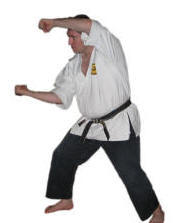
Yama uke (mountain block):
This is defense against kick. Okinawan karate is very simple when it comes to kicks. If it is below the waist, parry with your legs, if it is above waist line, catch a leg and sweep your opponent down. Use your lower arm to catch opponent’s leg (harai uke). Your upper arm will be in upper defending position (age) to smash opponents face with your forearm, to catch his lapel and to defend against any counterattack. This technique requires firmness and quick leap in (irikumi). Use your knee to sweep his standing leg.

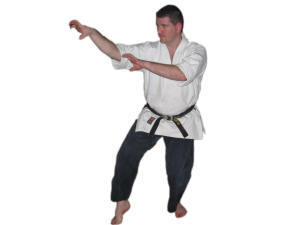 Saguri te (eye poke):
Saguri te (eye poke):
This movement is long vanished from modern karate, because it is very simple, you don’t need any hard training to apply this brutal technique. Itosu simplified this movement into shuto uke – more appropriate for school training. It simple: side step (tenshin) to avoid opponents punch, parry with your rear hand and jam your fingertips into opponents eyes. This is neither strong, nor jerky movement.
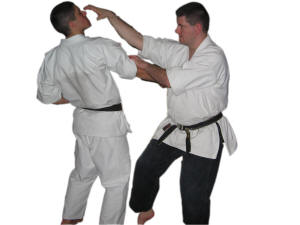 It is more effective to use fluid, “dancing like” movement, same as in Okinawan dance (odori). This way opponent will be suprised.
It is more effective to use fluid, “dancing like” movement, same as in Okinawan dance (odori). This way opponent will be suprised.
You can finish this technique with head manipulation take-down (kubiwa) and then subdue your opponent. Use your front leg to defend your groin area or to sweep opponents leg (fumi kiri).
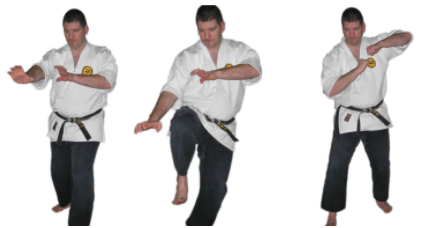
Sokuto geri (stamp-in):
This is side-thrust kick used against the opponent’s knee or shin to break his balance. In grappling with an opponent, step in with great force as if to cut attacker’s leg, with outside edge of the foot. It is very important to understand how to use your hands when executing this technique. You should jerk your opponent in that manner so that he is off the balance and to amplify your kick.
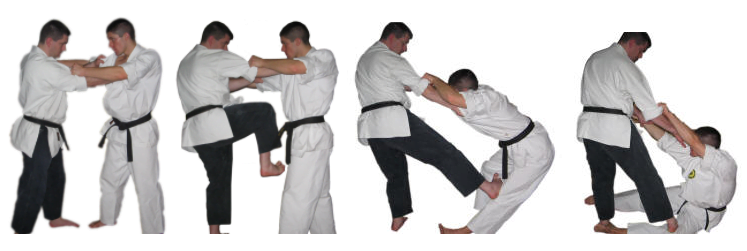
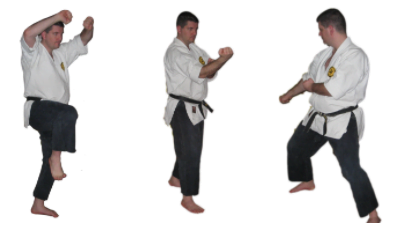 Tetsui (hammer fist):
Tetsui (hammer fist):
This sequence from Passai form can be interpreted as defense against roundhouse punch, shock and subdue your opponent. First position double upper block (moroto age uke) is simultaneous defense and leap in (irikumi) into opponent, while other hand is prepared for counter-attack. Hammer fist is aimed generally to opponent’s head. Most devastating results of hammer fist are achieved if you strike ear and base of the jaw area.

 Second part of the sequence (moroto uke – turn and gedan uke) represents torite or controlling techniques. Point of this movement is to subdue opponent with half-nelson hold. Few tips:
Second part of the sequence (moroto uke – turn and gedan uke) represents torite or controlling techniques. Point of this movement is to subdue opponent with half-nelson hold. Few tips:
- his arm should be in lock all the time; you can even put a wrist lock if you can at the end.
- Hold him in subdued position by holding his neck (or hair).
- Put your knee against his face, so that he don’t have an opportunity to grab your groin.
Hiji ate (elbow smash):

This is close distance technique. Truly brilliant demonstration of okinawa karate. I will explain step by step. First we assume that you are in wrestling position with you opponent. Elbow strike is executed using entire body mass. Step in forcefully, from natural stance (shizentai) to sumo stance (kiba dachi). Using this sudden step into low “sumo stance”, you will be able to utilize your whole body mass and to focus all the power into tip of your elbow. Common mistake here is to use your whole forearm as striking surface – this is wrong. You have to use only tip of your elbow and to smash opponent’s rib cage. Avoid hitting his abdominal and chest muscles and aim for ribs and chest bone (sternum).
Second technique is back-fist (uraken). Whip your fist, using your knuckles as striking surface, into opponents “upper lip-tip of the nose” area. This will make his eyes full of tears. Easy and painful. Back-fist should be followed by sudden pulling motion (hiki te). This is preparation for final testicle grab technique (gedan tsuki), but also this is escape technique. When you jerk-back your arm, opponents hold will be ruined. Finally you grab your opponent’s testicles.
When you look at this sequence, you may be thinking that this is too ruthless, but keep in mind that your attacker is probably bigger and stronger guy than you are, so you have to use every possible trick to avoid being hurt.

Tani otoshi (“to throw over the clif”):
This sequence is at the end of passai kata and represents throwing technique.
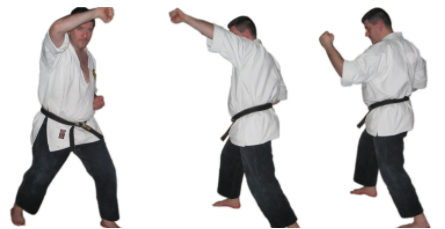
This is close distance technique, when your opponent tries to punch you. You block his attack and step-in, putting your hand into his armpit. It is necessary to block his legs with yours, so that he is off-balance when you pull him down.

Tips: You can throw your opponent in several different ways – over your shoulder, over your hips or just pull him over your legs
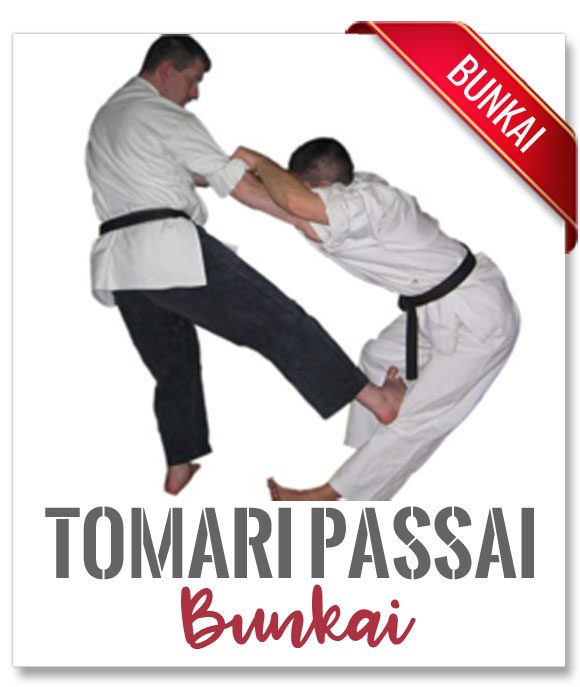
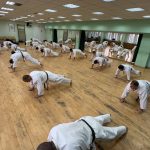

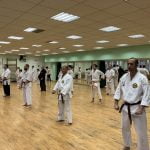


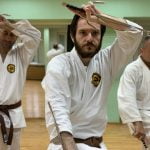
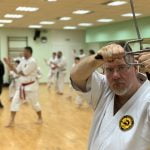
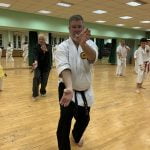
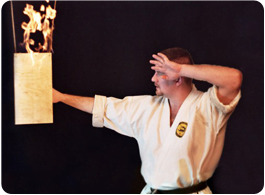
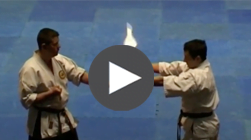
Veoma korisno objašnjenje za sve koji se bave karateom, bez obzira na stil.
Hvala Đorđe. :)